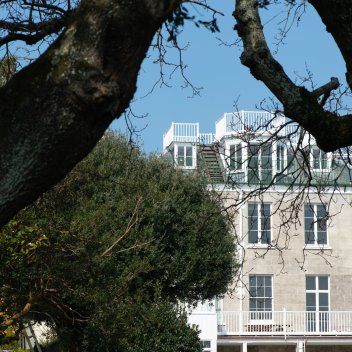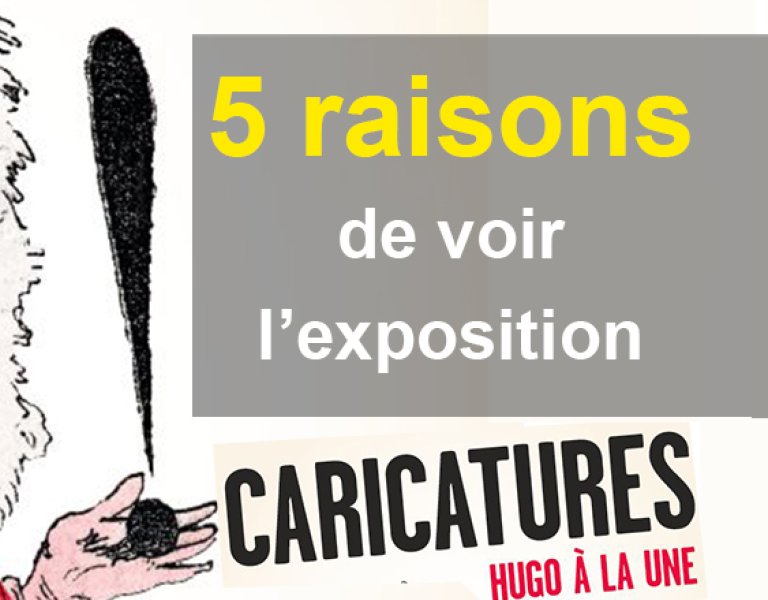
5 good reasons for going to see the exhibition Caricatures : Hugo à la une / Caricatures – Hugo as Front-Page News
The great writer's public image as conveyed in 180 caricatures... Why do you have to see this exhibition ?
180 political and literary caricatures of Victor Hugo on display at the Maison de Victor Hugo, Paris, until 6 January 2019. The caricatures are displayed chronologically and are fascinating from a historical point of view but also for their satirical and graphic qualities.
Here are five good reasons for immersing yourself in these cartoons of the great French writer, some of which mock him, some of which are admiring and reverential.
Museum
1] To find out what Victor Hugo looked like
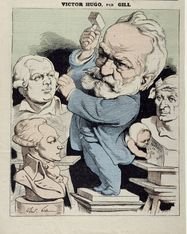
Everyone has the same mental picture of Victor Hugo: a small genial-looking man.
This mental picture of the great writer has been handed down from generation to generation and owes its origin in large part to the caricatures of him in the 19th century.
All the caricatures, whether fiercely critical or highly complimentary, seem to agree on the same features:
- A large forehead
- Brushed back hair
- A white beard
- Short in stature
Note that these features would be more or less emphasised as Hugo’s fame grew with the public.
2] To learn that he was an object of both adulation and hate
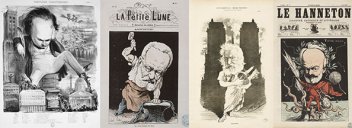
Victor Hugo has always been portrayed as a great novelist with strong and altruistic views that endeared him to the masses. The reality is that he was not always popular with the public at large.
The exhibition, which presents the caricatures in chronological order, reflects the way his popularity fluctuated over the years.
- Room 1: From 1830 to 1848 the caricatures are relatively friendly and tend to satirise his work as a writer and dramatist.
- Room 2: Criticism is at its most ferocious between 1848 and 1851 when Hugo is accused of being a turncoat (deserting the moderate right and taking an openly Republican oppositional stance) in order to get elected as a legislator (député). People doubt his sincerity and the press was quick to caricature him.
- Room 3: From 1851 to 1870, Victor Hugo’s political statements lead to his going into exile. The censors forbid any mention or depiction of him, although a few brave caricaturists flout the ban with admiring drawings.
- Room 4: From 1870 to 1885: At the fall of the Second Empire, Victor Hugo returns to Paris with a reputation for immense moral integrity. Many drawings are done, but they are more and more respectful. Hugo is given the features of an ageing, bearded patriarch.
3] To see what the ancestors of "Charlie Hebdo" used to do

The various caricatures on display in the exhibition are mostly from humorous or satirical newspapers, but also from newspapers of opinion, which were affiliated to a party and followed a particular political line.
There are caricatures from Le Chivari, La Lune, Le Grelot, Le Caricaturiste, Le Triboulet, and others, which were the ancestors of today’s Charlie Hebdo or Le Canard Enchaîné
Note that Victor Hugo never forbade or objected to any drawing of him. He was a staunch supporter of press freedom.
4] To see different styles of caricature
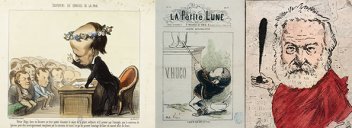
Whether it is a straight portrait, one focused on the subject, a complex scene, or a gallery of portraits, the caricatures in the exhibition come in various forms and guises. The constant factor is that they are all connected to contemporary current affairs or a particular event in Victor Hugo’s life or career.
5] Discover the venue, easily and for no extra charge
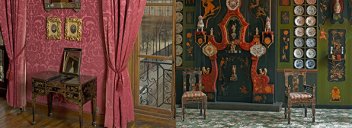
If you have never been to the Maison de Victor Hugo before, you can extend your visit to this magnificent private town house in the Marais, where Hugo lived between 1832 and 1848.
The different rooms reveal the various facets of Hugo's genius, before, during and after his exile. There is the antechamber furnished with chests and portraits that take us back to the poet's youth, the large salon where he played host to the leading lights of the July monarchy, the Chinese salon, which reflects his fondness for hunting out antiques, and the bedroom in which his death bed can still be seen.
Exhibition: Caricatures : Hugo à la une / Caricatures – Hugo as Front-Page News
13 September 2018 until 6 January 2019 at the Maison de Victor Hugo
